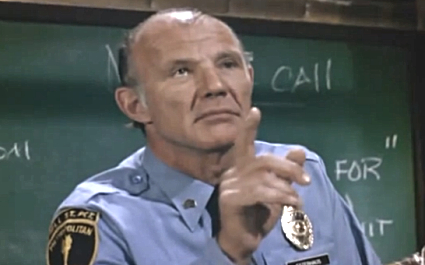
THEY WORKED WITH HIGHLY FLAMMABLE MATERIALS. They worked with tools and contraptions that could maim or kill. They trapped themselves underwater, on purpose. And they blew up a lot of stuff. All in the name of science, education, and entertainment. They were the Mythbusters.
When asked about the do-not-under-any-circumstances-try-this-at-home experiments they did on the show, cohost Adam Savage said:
“We had some close calls. We’ve had parts of explosions go over our heads. That was way back in the beginning days. But those close calls all served to do a couple of things. One, every single time we had one, we rejiggered every safety procedure until we felt confident in our safety margin. This is the thing: you’re never gonna be able to make something safe. You can increase the margin of safety. As long as you’re holding to that, and you don’t suffer the illusion that you have made something safe, then you stay in that mental state that allows you to deal with the contingencies.”

The way I understand it, the margin of safety is that zone between the possibility of something bad happening and the likelihood it will actually happen. It’s not just the distance and the reinforced concrete barrier between you and the huge, razor sharp, flaming, spinning, poison spewing, death machine, it’s also about your mental state — from the inception of the idea through its execution, and even after.
Have you thought it through? Have you taken into account how things might go sideways, and do you know what to do if they do? Are you aware not only of what you’re doing but also of what’s happening around you? And are you willing to call it all off if something doesn’t seem quite right?
Margin of safety is about taking as much danger as we can out of a dangerous thing. It’s the opposite of, “Hol’ ma beer.”

While margin of safety thinking appreciates luck, it doesn’t factor it into the equation. Luck has a habit of not showing up when summoned.
Instead of thinking, “Nothing bad ever happens to me,” margin of safety thinking is more like, “Nothing bad has happened to me so far, but it might, so I’ll try not to turn off my brain.”

Sargent Esterhaus of “Hill Street Blues” always ended roll call with, “Let’s be careful out there.” But what does it really mean to be careful? Not taking chances? Not doing anything dangerous or foolish? Sure, but in order to do that we need to be aware of what we’re doing, what we’re thinking, what’s happening around us. How can I know I’m about to do something stupid if I’m functioning on autopilot?
Becoming a nomad means living a new way. We can’t successfully live a new life thinking and acting our old ways — ways that might be so familiar we don’t even think about them anymore.
How much of a margin of safety is necessary? That depends upon the size of risk and whether if falls within one’s comfort zone. I don’t imagine anyone reading this post plans to disintegrate a cement truck with 850 pounds of ANFO like Mythbusters did, but completely changing your life to live in a vehicle can seem just as disruptive. So stay alert and aware, think things through, make prudent decisions in your nomadic life. And be careful out there.


This is a great post. The margin of safety zone is a perfect description.
I would love to read a article on specific problems that might arise and suggestions on what to do. I realize that a problem has multiple solutions and that there are times when no reasonable solutions might be available. I recall a newspaper article on a columnist who was driving in a rural area when two crazy men pulled alongside with a shotgun pointed at him. (It turned out well, thank goodness.)
We never know when we will come across a situation. We need to be prepared for anything and pray we never have to use it. Things can happen anywhere and at any time. Even when you think you are safe in you house.
Be Dangerous!
Suffice it to say that I am grateful that I took Bob’s advice for a >$3,000 emergency fund to heart today.
I probably should have spent more than that figure on an emergency replacement for a high mileage sedan but…
I had no idea what I wanted. If I had hated the minivan, it would have been an affordable mistake to switch to a Prius or a full sized van.
So am I supposed to be upset or something, and if so, why?
I cracked up at your phrasing “It’s the opposite of hold my beer”. Yet, I understood immediately. You do have a way with words that I enjoy reading.
I came across Gavin de Becker’s “The Gift of Fear” a few years back, and it is one of the best books I have ever read.
His goal is to sharpen the use of our intuition, paying attention to what is important, keeping ourselves safe while not harboring a generalized fear of all people.
I know more than the average bear about human behavior, but learned a great deal from this book.
I have read it and reread it, free in your local library, for sale as ebook and paperback online.
“…not harboring a generalized fear…” I think that’s a great way of saying what I’ve been trying to convey in this and other posts. Thank you.